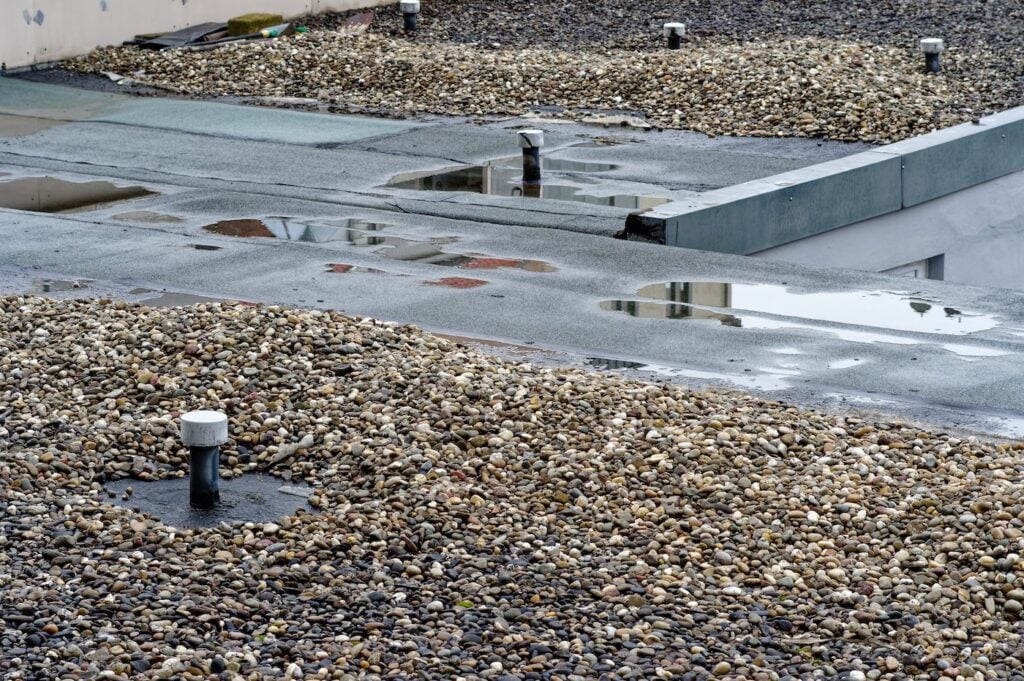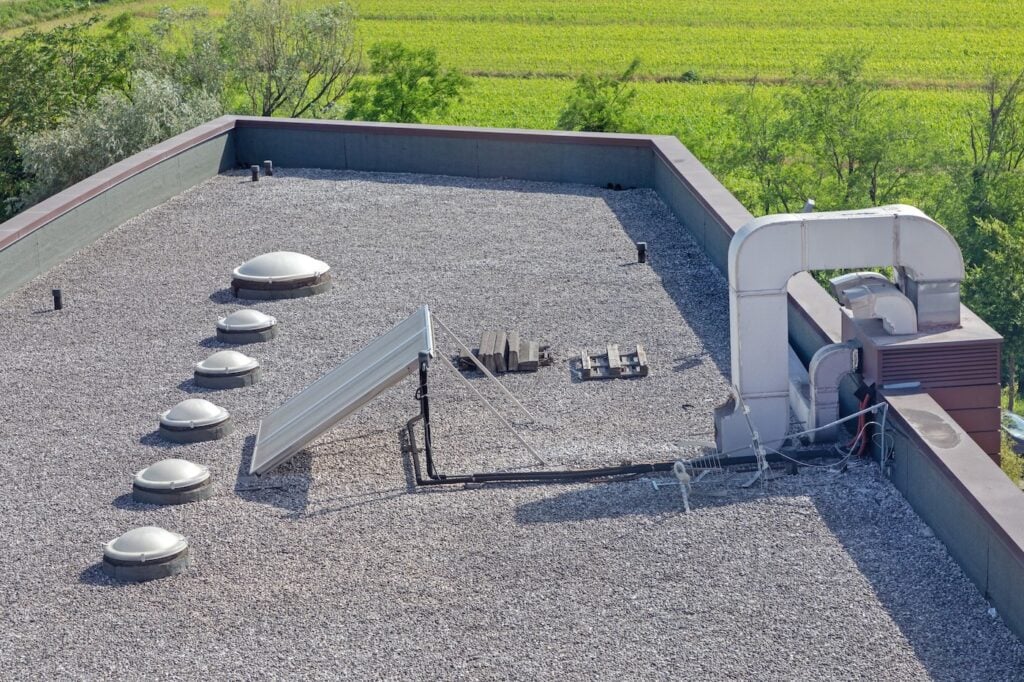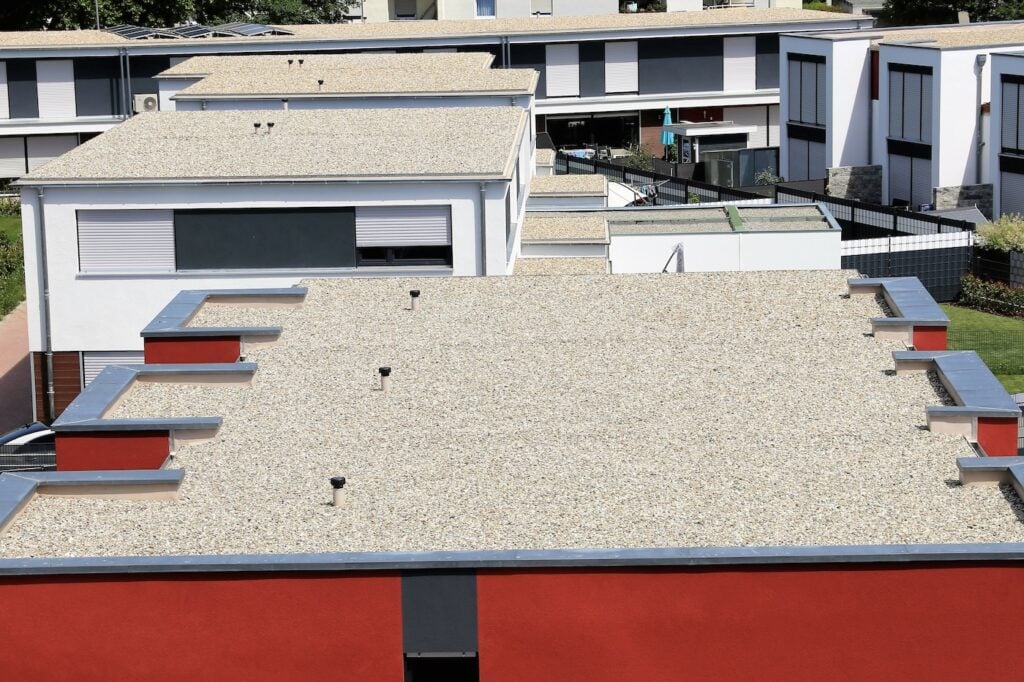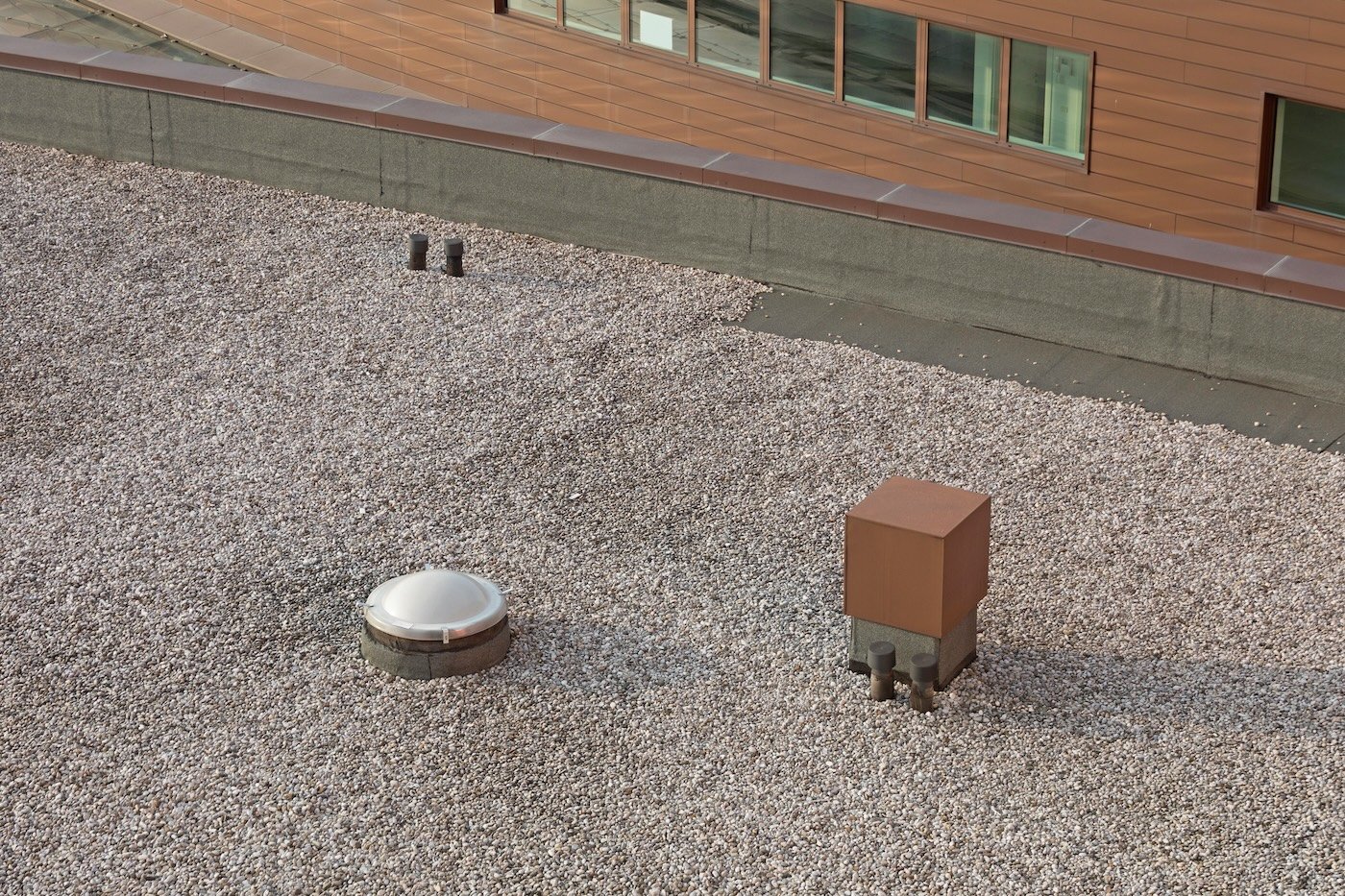What Is Built Up Roof? (Materials, Installation & More)
A built up roof (commonly called BUR) is a flat or low-slope roofing system made up of multiple layers of asphalt and reinforcing fabrics. Known for its durability, affordability, and weather resistance, BUR has been a trusted option for commercial and industrial properties for over 100 years. If you’re considering this system for your building, learning about its materials, installation, and advantages can help you decide whether it’s the right fit.
- Time-tested system: BUR has a long track record of proven performance.
- Multi-layered protection: Each layer adds strength against leaks and damage.
- Customizable surface: Options like gravel, coatings, or cap sheets adapt to your needs.
- Strong insulation: Helps regulate indoor temperatures and reduce energy costs.
🏢 The Evolution of Built Up Roofing
Built up roofing originated in the late 1800s as one of the first practical flat roofing solutions. Over the decades, the system has been refined to include stronger materials and safer application methods. Today, BUR remains one of the most dependable roofing systems for commercial properties.
In cities like Wilmington, DE, where buildings face hot summers, heavy rain, and occasional ice storms, BUR systems are valued for their ability to stand up to extreme conditions. Their layered design allows them to perform in ways many modern single-ply membranes cannot.
💪 Layers That Make a Built Up Roof Work

Each part of a built up roof contributes to its performance. Think of it as a shield with multiple defenses stacked together.
- Base sheet: The anchor that bonds directly to the roof deck.
- Bitumen layers: Asphalt or coal tar, applied hot or cold, forming the waterproof barrier.
- Reinforcing fabrics: Usually fiberglass or organic felt, which add tensile strength.
- Protective surfacing: Gravel, mineral granules, or reflective coatings guard against UV rays and foot traffic.
The combination of these layers allows property owners to customize thickness and strength depending on the building’s needs.
🛠️ 3 Ways Professionals Install BUR Systems
While all BUR systems share the same concept, installation methods can vary depending on the materials used and the specific needs of the building.
1. Hot Applied BUR
Asphalt is heated to a liquid state, then mopped or sprayed between fabric layers. This creates a seamless bond and strong waterproofing.
2. Cold Applied BUR
Cold adhesives are used instead of heated asphalt, offering a safer and less odor-intensive process. This method is ideal in urban areas where fumes may be a concern.
3. Ballasted BUR
Surfaced with gravel or stone, this style not only protects against UV rays but also provides additional weight to keep the roofing system stable in high winds.
✅ Advantages Beyond Durability

A built up roof doesn’t just last a long time; it offers a range of benefits for property owners.
- Energy efficiency: Reflective coatings or light-colored surfacing can lower cooling costs.
- Fire resistance: Gravel surfacing adds a natural barrier against fire spread.
- Low maintenance needs: Fewer seams mean fewer weak points where leaks could occur.
- Impact resistance: Multiple layers stand up to hail, debris, and heavy foot traffic.
- Noise reduction: BUR systems naturally dampen sound, which is a major plus for schools, hospitals, and office buildings.
- Weather resilience: The layered design performs well in both scorching summers and freezing winters, making it a flexible year-round solution.
🤔 Potential Drawbacks to Consider
No roofing system is perfect, and BUR has its challenges. The installation process can be disruptive since it requires skilled crews, equipment, and often hot asphalt. BUR systems are also heavier than other roofing types, meaning your building must have adequate structural support. Finally, while they’re durable, they are not immune to standing water issues, so proper drainage is essential.
Another factor to keep in mind is that BUR installation usually takes longer than single-ply systems, which can be a concern for businesses needing a fast turnaround. Repairs can also be tricky, as finding the exact source of a leak under several layers often requires cutting into the surface. That said, once installed correctly, BUR roofing systems require minimal upkeep, making them a solid long-term investment.
⚖️ Comparing BUR to Other Roofing Options
When choosing a roofing system, it helps to compare built up roofing with alternatives.
- BUR vs. Modified Bitumen: Modified bitumen is similar but usually comes in pre-manufactured rolls, making installation faster. BUR often lasts longer due to its thicker layers.
- BUR vs. Single-Ply Membranes: Single-ply options like TPO or EPDM are lighter and quicker to install, but they don’t provide the same level of multi-layer protection as BUR.
- BUR vs. Metal Roofing: Metal systems offer longevity and sustainability but can be more expensive upfront than BUR.
While each system has its strengths, BUR is often the most cost-effective over time because of its durability and proven performance history. For buildings that need reliable protection with minimal upkeep, especially in climates with seasonal extremes, BUR continues to be a smart, value-driven option.
👷♂️ Why You Should Hire a Professional
Built up roof installation is not something property owners should attempt themselves. The process involves heavy equipment, hot asphalt, and precise layering that requires trained expertise. Roofing professionals not only handle the safety risks but also ensure that each layer is applied evenly and meets local building codes.
We’re proud to help property owners in Wilmington, DE, and nearby cities with built up roofing installation, repair, and maintenance. Choosing a trusted contractor ensures that your roof performs at its best for decades.
⭐️ Rely on One Way Roofing for Built Up Roof Solutions

At One Way Roofing, we bring years of experience to every commercial roofing project. Our team knows how to design and install built up roof systems that protect your building from the toughest conditions. From materials selection to expert application, we handle every detail so you don’t have to worry.
Protect your property investment with a system that’s built to last. Contact One Way Roofing today for a free inspection and learn if a built up roof is the right solution for your building.

